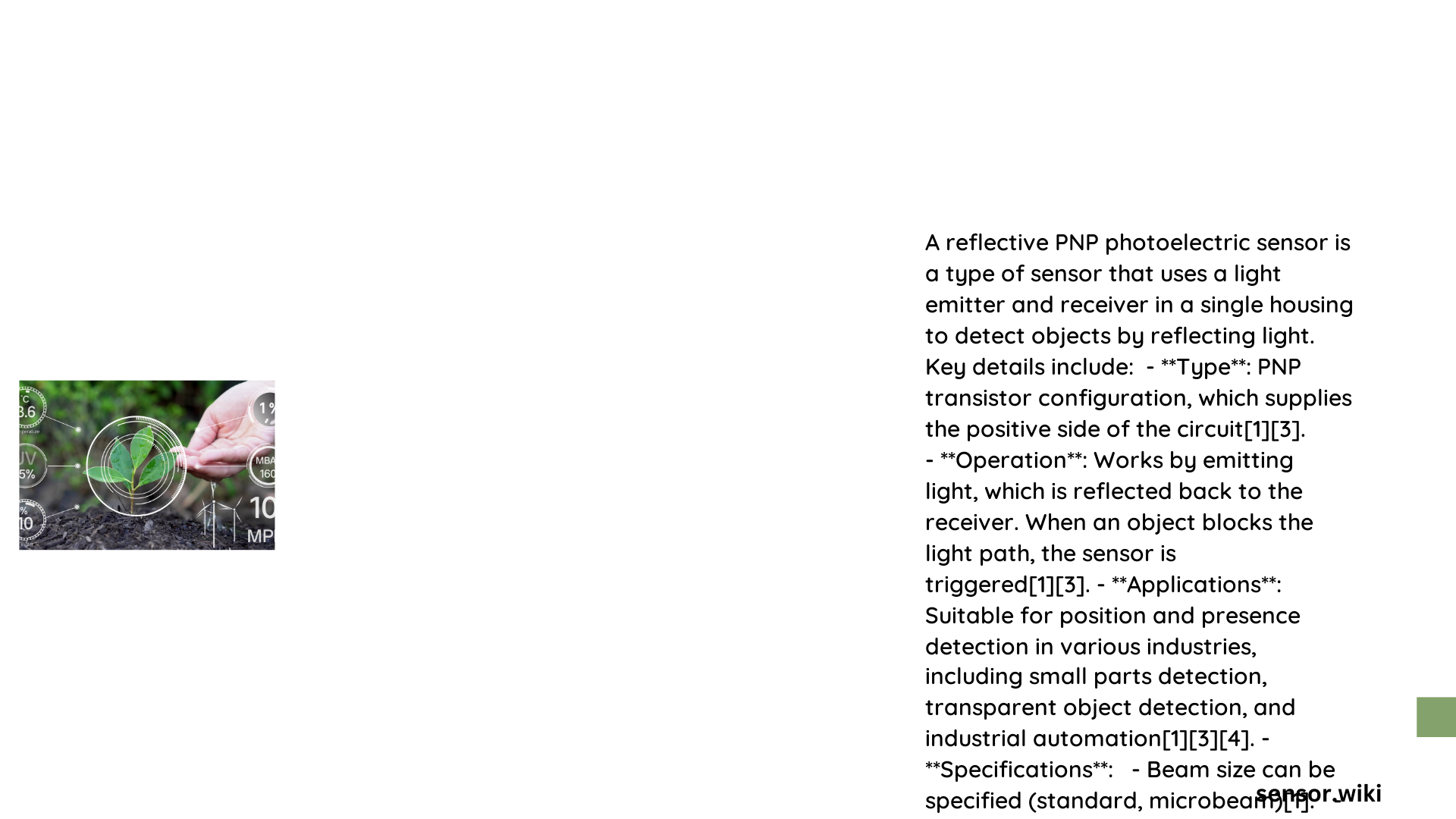Reflective PNP sensors are sophisticated photoelectric detection devices that utilize advanced optical technologies to sense objects through reflection mechanisms. These precision instruments provide reliable object detection across diverse industrial environments by emitting light and analyzing reflected signals, enabling high-performance sensing with exceptional accuracy, fast response times, and robust operational capabilities in challenging manufacturing and automation scenarios.\n\n## What Are Reflective PNP Sensors?\n\nReflective PNP sensors are specialized photoelectric sensors designed to detect objects by measuring light reflection. Unlike traditional sensors, these devices emit a light beam that bounces off a reflective surface or target object, creating a unique detection mechanism with superior performance characteristics.\n\n### Key Technical Characteristics\n\n| Parameter | Typical Specification |\n|———–|———————-|\n| Sensing Distance | 0-15 meters |\n| Response Time | 0.5-1.0 ms |\n| Supply Voltage | 10-30 VDC |\n| Output Type | PNP Open Collector |\n| Environmental Rating | IP67/IP69K |\n\n## How Do Reflective PNP Sensors Work?\n\nReflective PNP sensors operate through a sophisticated process:\n\n1. Light Emission: Sensor generates a focused light beam\n2. Reflection Capture: Light reflects off target object or reflector\n3. Signal Processing: Analyzes reflected light intensity\n4. Output Generation: Produces electrical signal based on detection\n\n## What Are the Primary Applications?\n\nReflective PNP sensors excel in multiple industrial domains:\n\n- Factory Automation\n- Packaging Systems\n- Conveyor Monitoring\n- Material Handling\n- Quality Control Processes\n\n## How to Install Reflective PNP Sensors?\n\n### Mounting Requirements\n\n- Select appropriate mounting bracket\n- Ensure precise alignment with target\n- Use recommended torque specifications\n- Verify electrical connections\n\n### Wiring Considerations\n\nmarkdown\n| Pin | Function |\n|-----|----------|\n| 1 | Power Supply (V+) |\n| 2 | Output Signal |\n| 3 | Ground (GND) |\n| 4 | Additional Functions |\n\n\n## What Performance Factors Matter?\n\nCritical performance parameters include:\n\n- Sensing Distance\n- Response Time\n- Environmental Tolerance\n- Signal Stability\n- Power Consumption\n\n## Troubleshooting Common Issues\n\n- Check alignment precision\n- Verify power supply voltage\n- Inspect reflective surface condition\n- Clean optical surfaces regularly\n- Confirm proper grounding\n\n## Advanced Selection Criteria\n\nWhen choosing a reflective PNP sensor, consider:\n\n1. Environmental conditions\n2. Required sensing distance\n3. Response time specifications\n4. Mechanical robustness\n5. Compatibility with existing systems\n\n## Maintenance Best Practices\n\n- Periodic optical surface cleaning\n- Regular calibration checks\n- Environmental seal inspection\n- Electrical connection verification\n- Performance benchmark testing\n\nReflective PNP sensors represent a pinnacle of sensing technology, offering unprecedented precision and reliability across complex industrial environments.\n\n### Reference:\n- Omron Sensor Specifications\n- Photoelectric Sensor Technical Documentation

